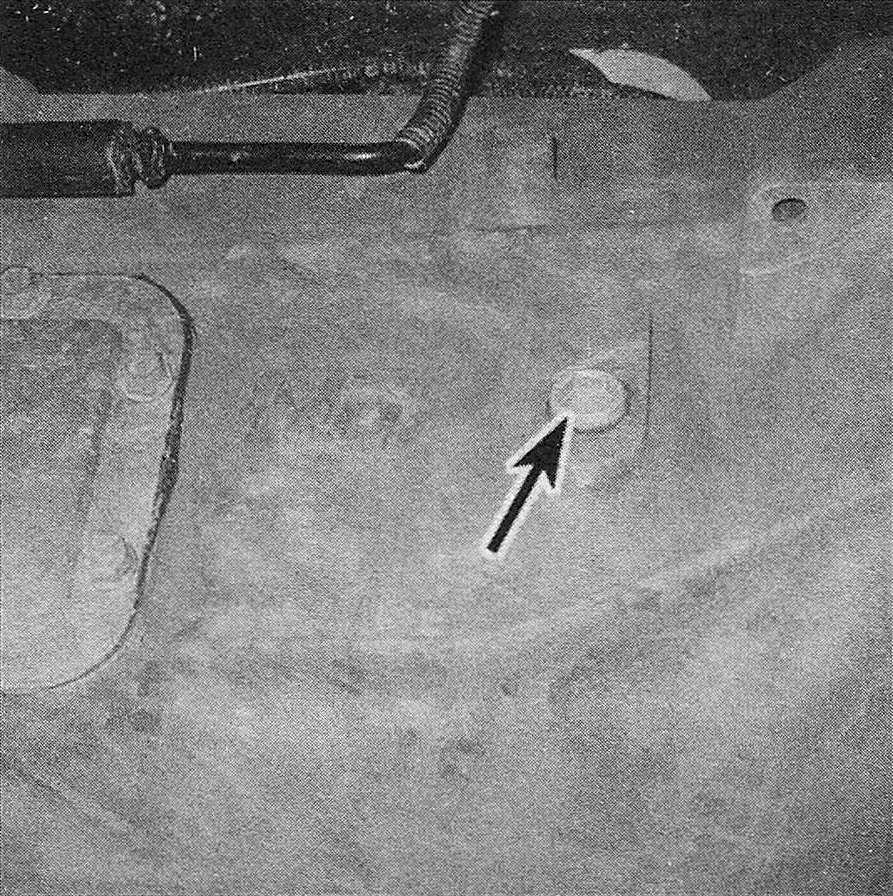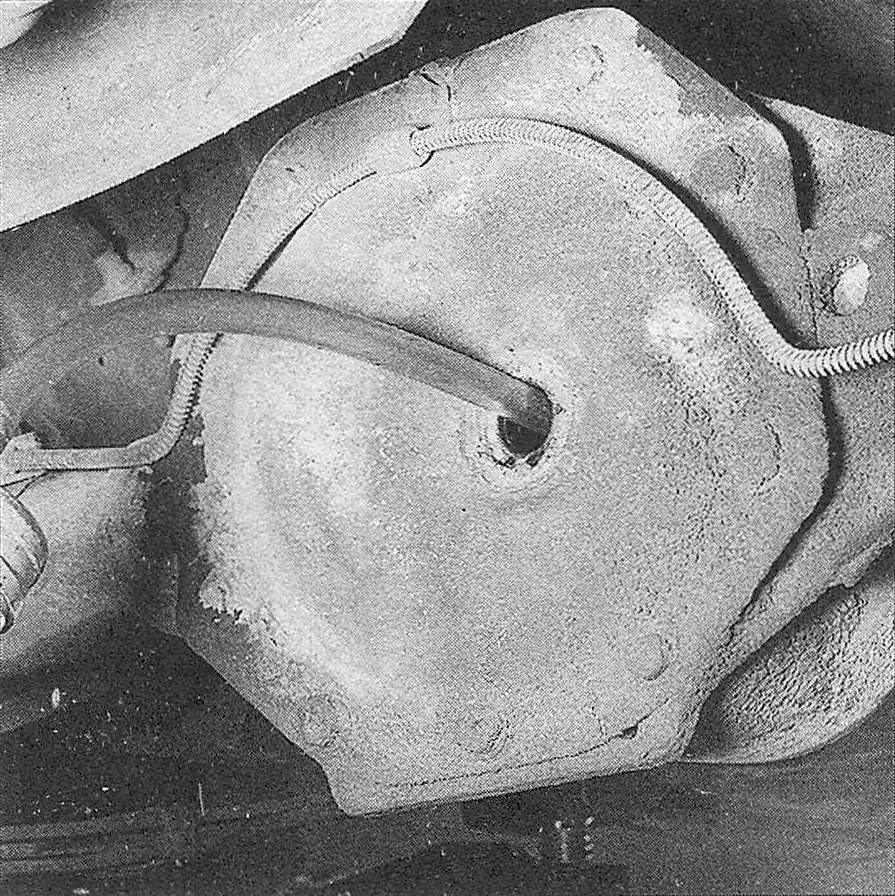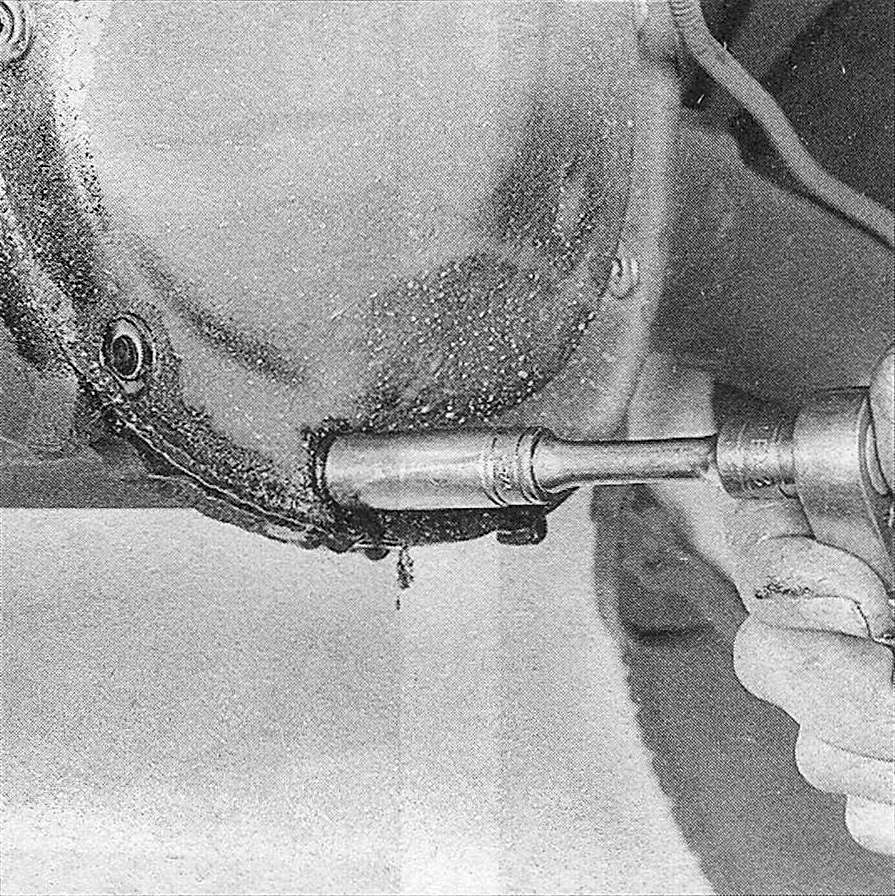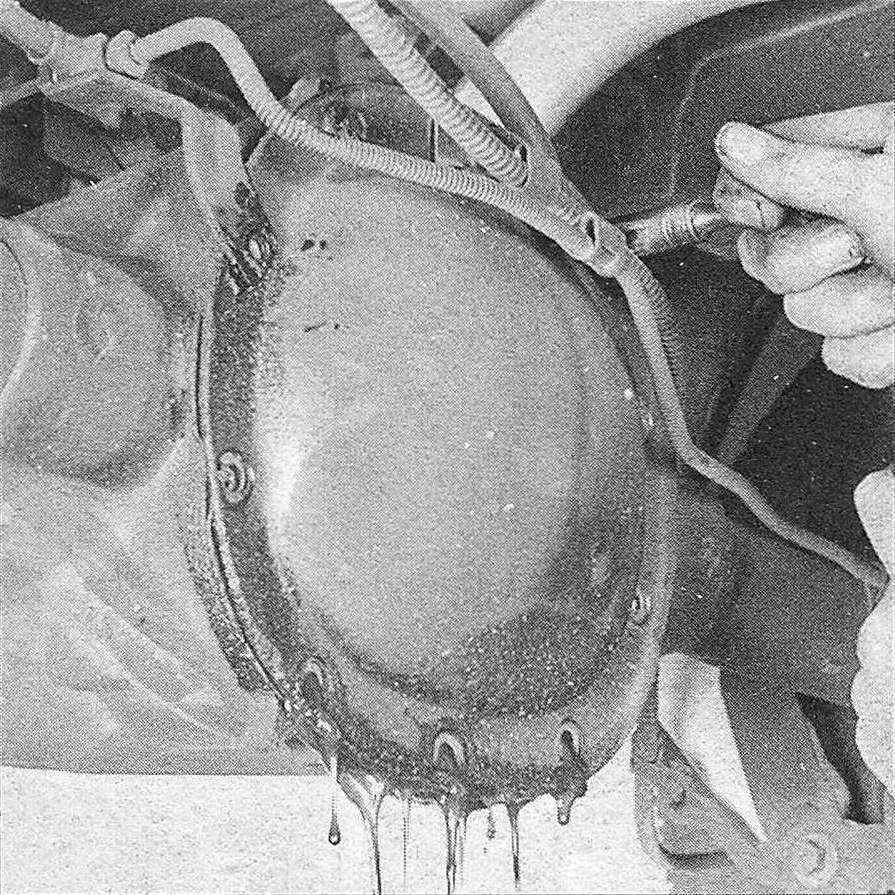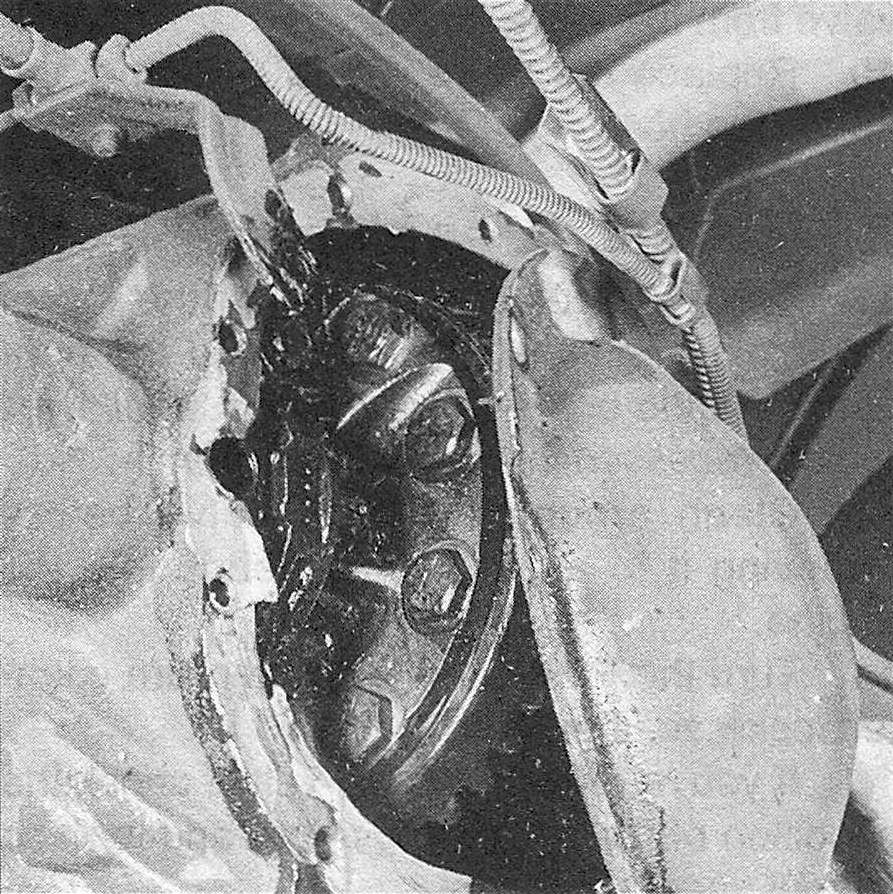Manual transmission, transfer case (4WD models) and differential lubricant change
(every 60,000 miles or 48 months)
Note: Rear (and front on 4WD models) differential lubricant should be changed every 15,000 miles or 12 months on vehicles with diesel engines or any vehicle used in rough service conditions such as frequent towing or off-road use.
Manual transmission
1. This procedure should be performed after the vehicle has been driven so the lubricant will be warm and therefore will flow out of the transmission more easily. Raise the vehicle and support it securely on jackstands.
2. Move a drain pan, rags, newspapers and wrenches under the transmission. Remove the fill plug from the side of the transmission case (see illustration 22.1).
3. Remove the transmission drain plug at the bottom of the case and allow the lubricant to drain into the pan. Some transmissions don’t have a drain plug; remove the lower PTO cover bolt to drain the lubricant.
4. After the lubricant has drained completely, reinstall the plug and tighten it securely.
5. Using a hand pump, syringe or funnel, fill the transmission with the specified lubricant until it begins to leak out through the hole. Reinstall the fill plug and tighten it securely.
6. Lower the vehicle.
7. Drive the vehicle for a short distance, then check the drain and fill plugs for leakage.
Transfer case (4WD models)
8. Drive the vehicle for at least 15 minutes to warm the lubricant in the case.
9. Raise the vehicle and support it securely on jackstands.
10. Remove the filler plug from the case.
11. Remove the drain plug from the lower part of the case and allow the old lubricant to drain completely (see illustration 22.5).
12. After the lubricant has drained completely, reinstall the plug and tighten it securely.
13. Fill the case with the specified lubricant until it is level with the lower edge of the filler hole.
14. Install the filler plug and tighten it securely.
15. Drive the vehicle for a short distance and recheck the lubricant level. In some instances a small amount of additional lubricant will have to be added.
Differential
16. This procedure should be performed after the vehicle has been driven so the lubricant will be warm and therefore will flow out of the differential more easily.
17. Raise the vehicle and support it securely on jackstands. If the differential has a bolt-on cover at the rear, it is usually easiest to remove the cover to drain the lubricant (which will also allow you to inspect the differential). If there’s no bolt-on cover, look for a drain plug at the bottom of the differential housing. If there’s not a drain plug and no cover, you’ll have to remove the lubricant through the filler plug hole with a suction pump. If you’ll be draining the lubricant by removing the cover or a drain plug, move a drain pan, rags, newspapers and wrenches under the vehicle.
18. Remove the filler plug from the differential (Manual transmission, transfer case and differential lubricant level check). If a suction pump is being used, insert the flexible hose. Work the hose down to the bottom of the differential housing and pump the lubricant out (see illustration). If you’ll be draining the lubricant through a drain plug, remove the plug and allow the lubricant to drain into the pan, then reinstall the drain plug.
28.18 This is the easiest way to remove the lubricant: Work the end of the hose to the bottom of the differential housing and draw out the old lubricant with a hand pump
19. If the differential is being drained by removing the cover plate, remove the bolts on the lower half of the plate. Loosen the bolts on the upper half and use them to keep the cover loosely attached. Allow the oil to drain into the pan, then completely remove the cover (see illustrations).
28.19a Remove the bolts from the lower edge of the cover …
28.19b … then loosen the top bolts and allow the lubricant to drain out
28.19c After the lubricant has drained, remove the remaining cover bolts and the cover
20. Using a lint-free rag, clean the inside of the cover and the accessible areas of the differential housing. As this is done, check for chipped gears and metal particles in the lubricant, indicating that the differential should be more thoroughly inspected and/or repaired.
21. Thoroughly clean the gasket mating surfaces of the differential housing and the cover plate. Use a gasket scraper or putty knife to remove all traces of the old gasket (see illus tration).
28.21 Carefully scrape the old gasket material off to ensure a leak-free seal
22. Apply a thin layer of RTV sealant to the cover flange, then press a new gasket into position on the cover. Make sure the bolt holes align properly.
23. Place the cover on the differential housing and install the bolts. Tighten the bolts securely.
24. Use a hand pump, syringe or funnel to fill the differential housing with the specified lubricant until it’s level with the bottom of the plug hole.
25. Install the filler plug and make sure it is secure.
